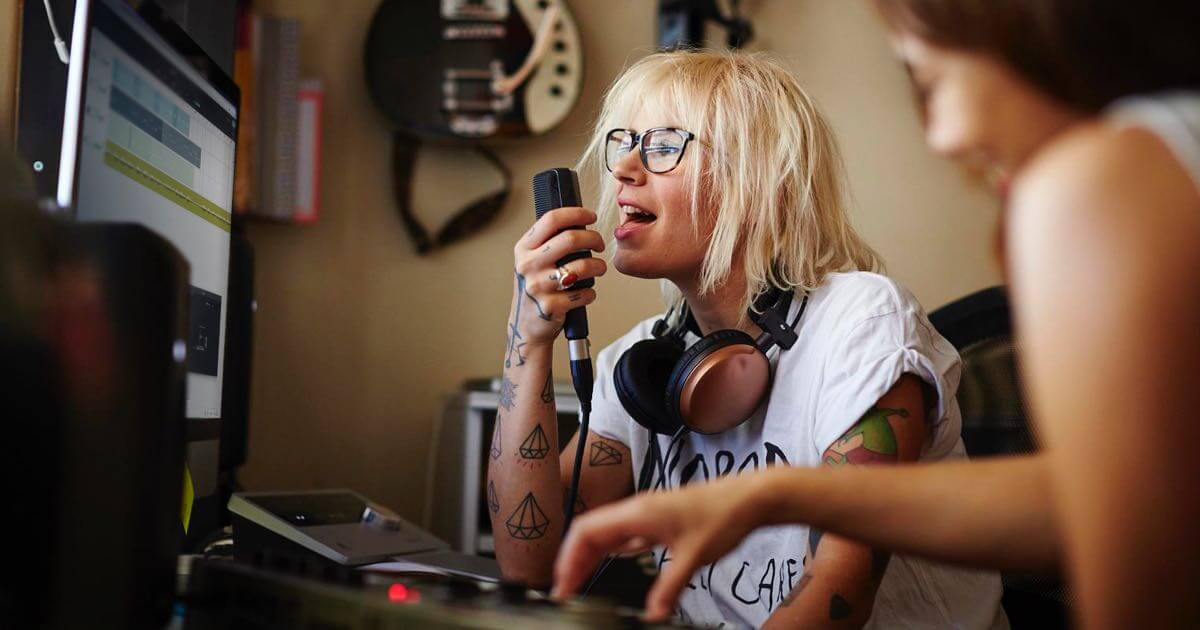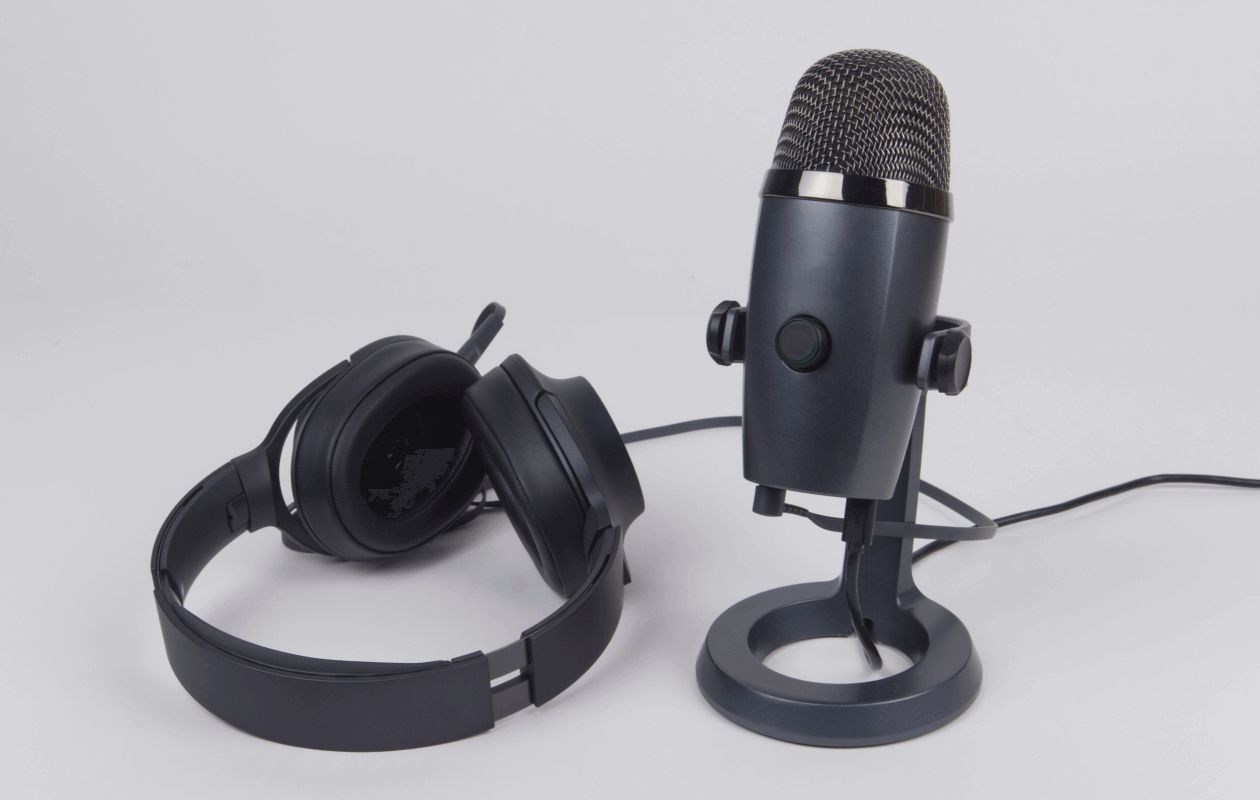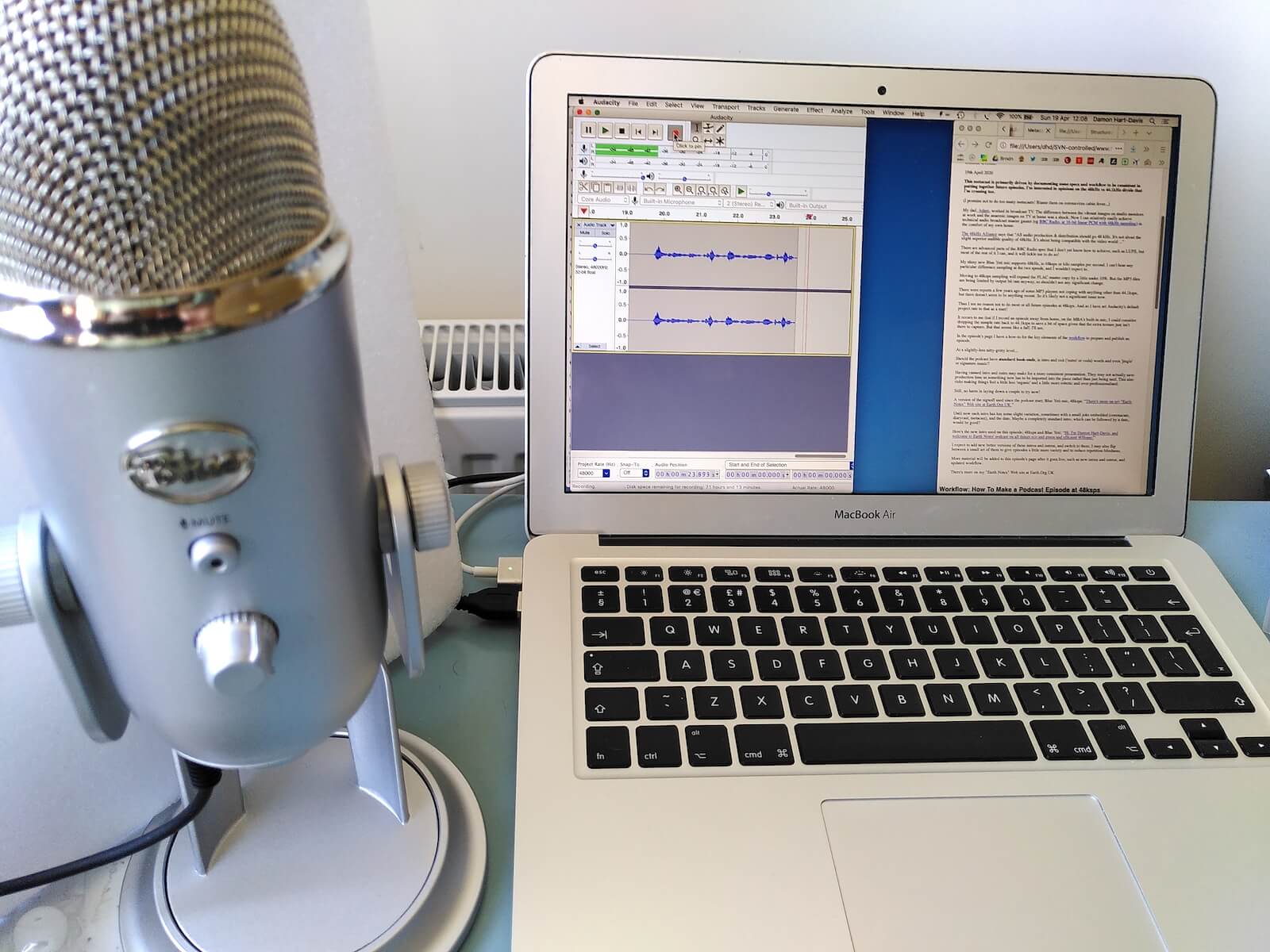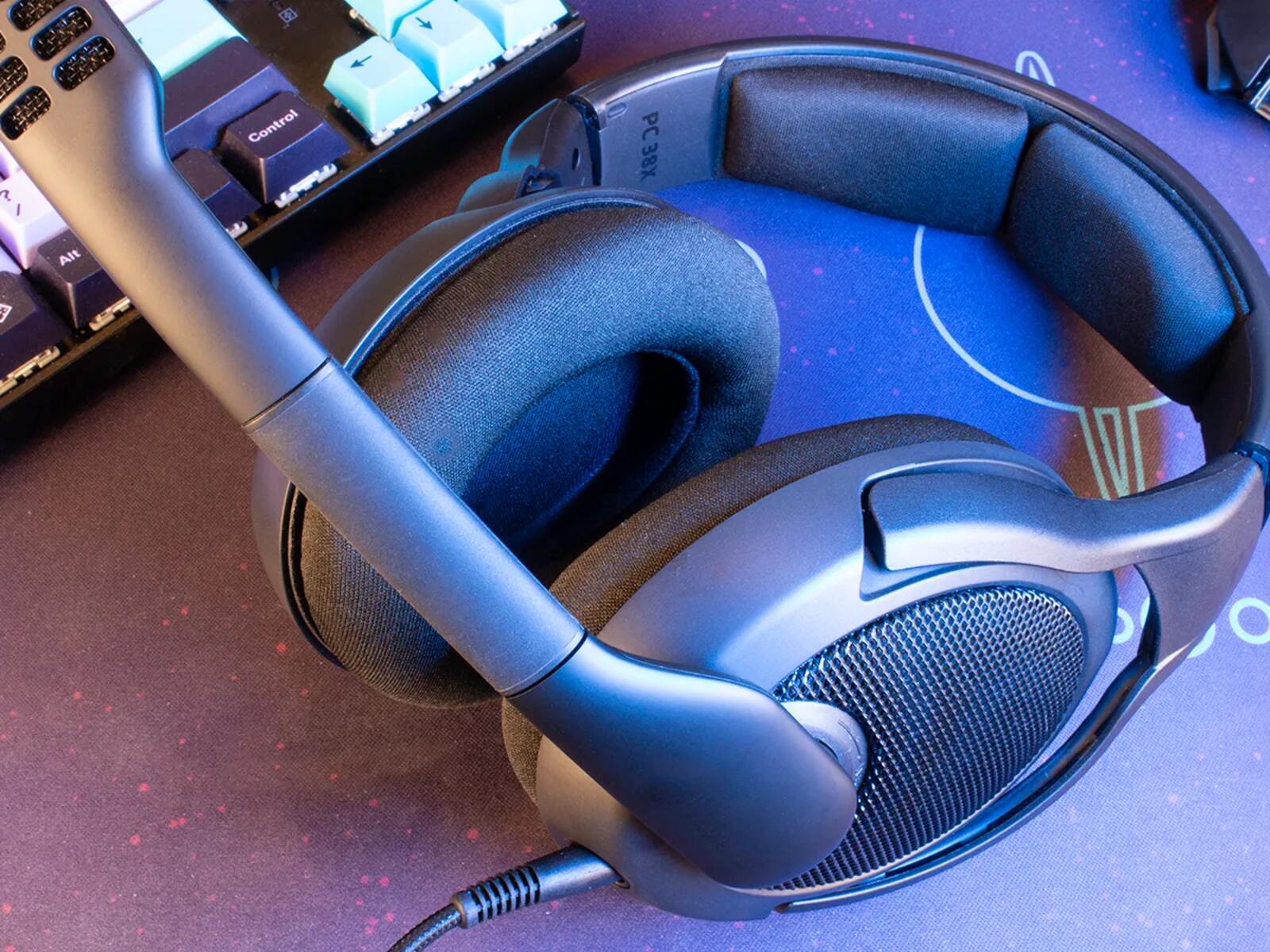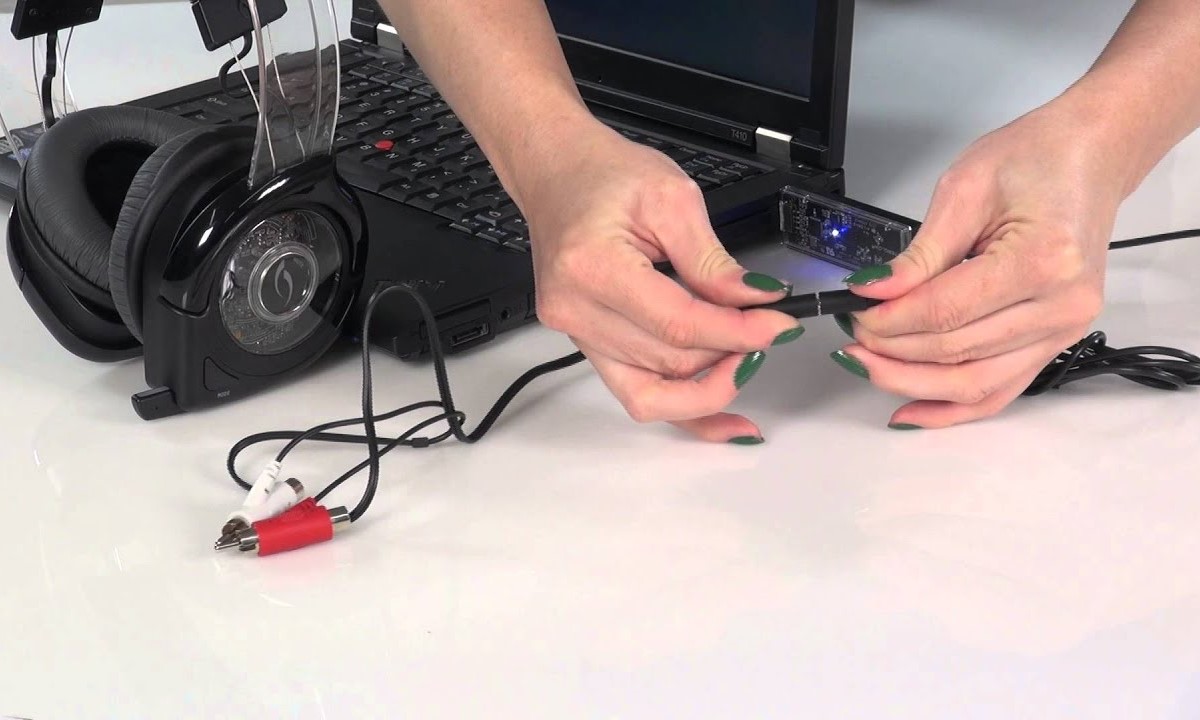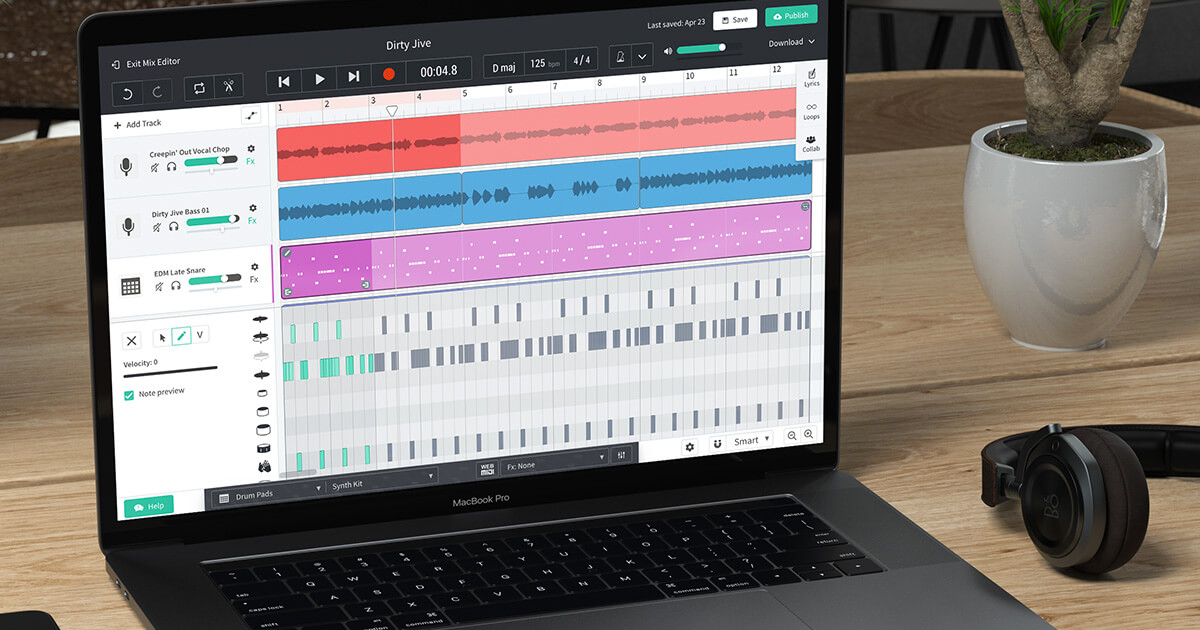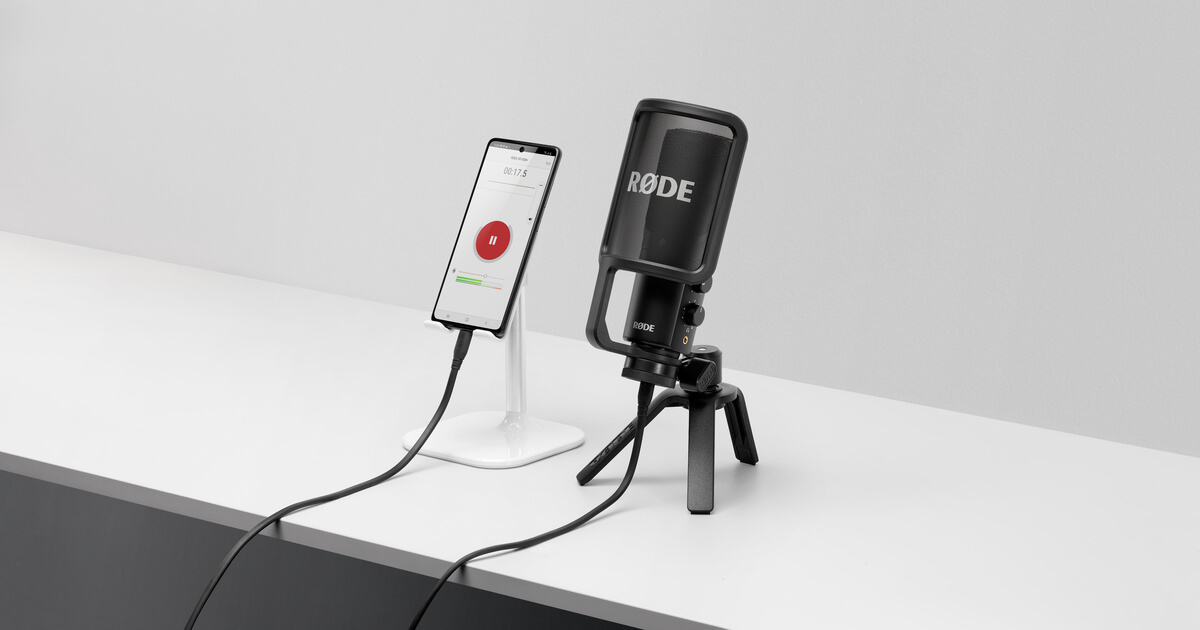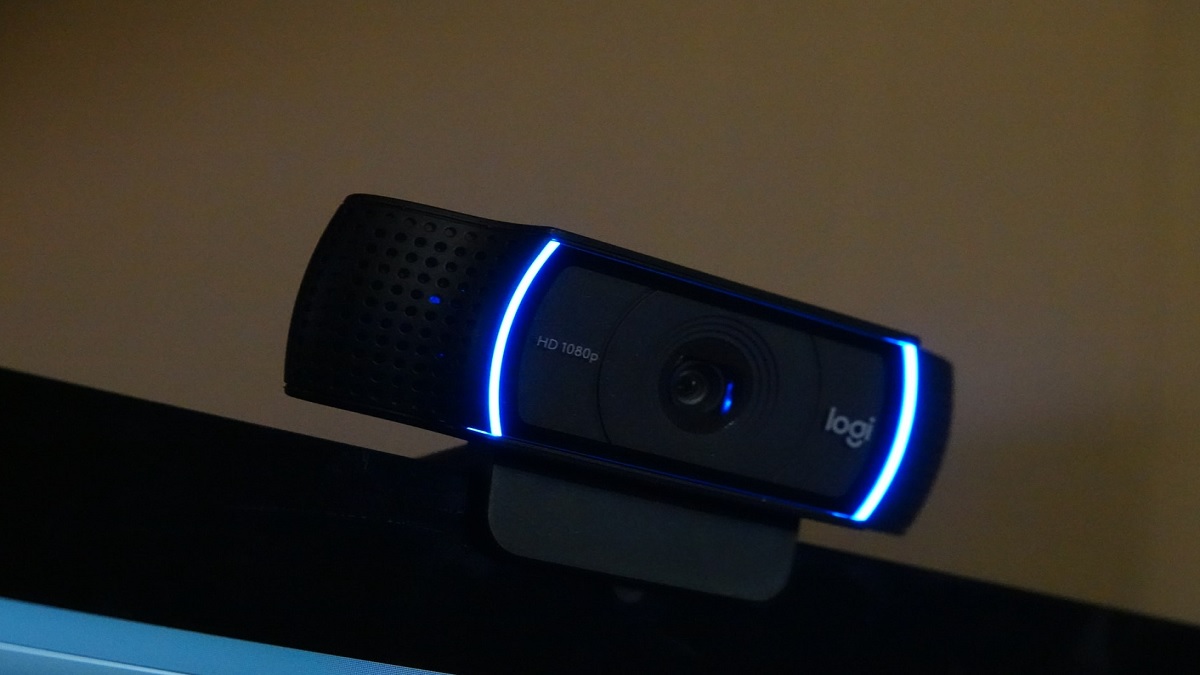Introduction
USB microphones have become incredibly popular among musicians, podcasters, and content creators due to their convenience and ease of use. BandLab, a popular online music production platform, offers a seamless integration with USB microphones, allowing users to record and collaborate on projects with ease. However, it can be frustrating when your USB microphone isn’t working as expected on BandLab. There can be several reasons why your USB microphone is not functioning properly, and in this article, we will explore some of the common issues and how to troubleshoot them.
It is important to note that USB microphones are designed to be plug-and-play devices, meaning that they should work when connected to a computer without requiring additional drivers or software. However, despite their user-friendly nature, there can still be issues that prevent them from functioning correctly on BandLab.
In the following sections, we will delve into some of the common issues that can cause your USB microphone to malfunction on BandLab. We will also provide troubleshooting steps to help you resolve these issues and get your USB microphone working seamlessly on the platform.
So, if you’re encountering problems with your USB microphone on BandLab, don’t worry. By following the troubleshooting tips outlined in this article, you’ll be able to identify and resolve the issue, allowing you to get back to creating music and content without any interruptions. Let’s get started!
Common Issues with USB Microphones on BandLab
While USB microphones are generally reliable, there are a few common issues that users may encounter when using them on BandLab. Understanding these issues can help you troubleshoot and resolve them more efficiently. Here are some of the most commonly reported problems:
- No Sound or Low Volume: One of the most frustrating issues is when your USB microphone produces no sound or extremely low volume. This can be caused by a variety of factors, including incorrect input/output settings, faulty cables, or a defective microphone.
- Static or Interference: Another common problem is experiencing static or interference in the audio recordings. This can result from electrical interference, faulty connections, or inadequate shielding on the microphone.
- Dropouts or Audio Glitches: Dropouts or audio glitches occur when the audio cuts in and out or contains artifacts. This can happen due to buffer or latency issues, outdated USB drivers, or inadequate power supply.
- Compatibility Issues: Some USB microphones may not be fully compatible with BandLab or may require specific drivers or settings to work correctly. This can cause compatibility issues and result in the microphone not being recognized or functioning as expected.
- Mic Not Showing Up in BandLab: Occasionally, users may find that their USB microphone is not showing up as an option in BandLab’s device settings. This can be due to driver conflicts, outdated software, or a problem with the USB port.
Identifying the specific issue with your USB microphone can be challenging, as it may involve a combination of factors. In the following sections, we will discuss the steps you can take to troubleshoot and resolve these common issues, helping you get your USB microphone working smoothly on BandLab again.
Remember, each problem may have a different root cause, so it’s essential to follow the troubleshooting steps outlined in this article. By doing so, you can narrow down the issue and find the appropriate solution to ensure a seamless recording experience on BandLab.
Insufficient Connection
One of the primary reasons why your USB microphone may not be working properly on BandLab is due to an insufficient connection. If the connection between your microphone and computer is weak or unstable, it can result in various issues such as intermittent audio, distorted sound, or no sound at all. Here are some steps to troubleshoot the connection:
- Check the USB Cable: Start by inspecting the USB cable that connects your microphone to the computer. Ensure that the cable is securely plugged into both the microphone and the USB port on your computer. Try using a different USB cable to rule out any cable-related issues.
- Test Different USB Ports: Sometimes, certain USB ports on your computer may not provide sufficient power or data transfer for the USB microphone. Try plugging the microphone into different USB ports on your computer to see if it makes a difference. Additionally, avoid using USB hubs or extension cables, as they can sometimes cause connection problems.
- Clean the USB Port: Over time, dust and debris can accumulate inside the USB port, leading to a poor connection. Use a small, soft brush or compressed air to clean the USB port gently. This can help ensure a better connection and improve the performance of your USB microphone.
- Restart Your Computer: Sometimes, a simple system restart can resolve connection issues. Restart your computer and try connecting the USB microphone again to see if it starts functioning properly on BandLab.
- Use a Powered USB Hub: If you’re still facing connection problems, using a powered USB hub can provide a stable power supply to your USB microphone. This can be helpful if your computer’s USB ports are unable to provide enough power to the microphone.
If the issue persists even after trying these steps, there may be a deeper problem with your USB microphone or computer. In such cases, contacting the manufacturer’s customer support or seeking professional assistance can be beneficial to further diagnose and resolve the connection issues.
Remember, establishing a stable and reliable connection is crucial for the proper functioning of your USB microphone on BandLab. By following the troubleshooting steps mentioned above, you can ensure that your microphone is connected correctly and ready for recording on the platform.
Compatibility Issues
Compatibility issues can sometimes arise when using USB microphones on BandLab. While most USB microphones are designed to work seamlessly with various platforms, including BandLab, there can be instances where compatibility problems occur. Here are some steps to troubleshoot and resolve compatibility issues:
- Check System Requirements: Ensure that your computer meets the minimum system requirements for BandLab. Outdated hardware or operating systems may not be fully compatible with the platform, leading to issues with USB microphone functionality. Check BandLab’s website or documentation for the recommended system specifications.
- Verify USB Microphone Compatibility: Not all USB microphones are fully compatible with BandLab or may require specific settings or drivers. Check BandLab’s official documentation or support forums to verify if your USB microphone model is listed as compatible. Additionally, visit the manufacturer’s website for any specific BandLab-related guidance or updates for your microphone model.
- Update BandLab App: Ensure that you are using the latest version of the BandLab application. Developers regularly release updates to address compatibility issues and improve performance. Check for updates in your app store or through the BandLab website and install any available updates.
- Update USB Microphone Firmware: Some USB microphones have firmware that can be updated to improve compatibility with different platforms. Visit the manufacturer’s website and check if there are any firmware updates available for your microphone. Follow the instructions provided by the manufacturer to update the firmware correctly.
- Disable Conflicting Software: Conflicting software or audio drivers can interfere with the operation of your USB microphone on BandLab. Disable or uninstall any unnecessary audio software or drivers that may be conflicting and causing compatibility issues. Restart your computer after making these changes to ensure they take effect.
If you have gone through these troubleshooting steps and are still experiencing compatibility issues with your USB microphone on BandLab, it may be helpful to reach out to BandLab’s support team or the manufacturer of your microphone for further guidance. They may have specific recommendations or solutions to address the compatibility issue.
Remember that ensuring compatibility between your USB microphone and BandLab is essential for a smooth and hassle-free recording experience. By following the troubleshooting steps outlined above, you can increase the chances of resolving any compatibility issues and enjoy seamless integration between your USB microphone and BandLab.
Incorrect Input/Output Settings
Incorrect input/output settings can often be the culprit behind USB microphone issues on BandLab. If the input or output settings on your computer or within the BandLab application are misconfigured, it can lead to problems such as no sound, distorted audio, or the microphone not being detected. Here are some steps to troubleshoot and adjust the input/output settings:
- Check BandLab’s Audio Settings: Open the BandLab application and navigate to the settings menu. Look for the audio settings section and ensure that your USB microphone is selected as the input device. Similarly, check the output device settings to ensure that they are configured correctly.
- Adjust Computer’s Sound Settings: Access your computer’s sound settings by right-clicking on the speaker icon in the taskbar and selecting “Sound” or similar options. In the audio settings, verify that your USB microphone is set as the default input device. Adjust the volume levels and ensure that the microphone is not muted or set to a very low level.
- Test Different Sample Rates and Bit Depths: In BandLab’s audio settings or your computer’s sound settings, you may find options for sample rates and bit depths. Experiment with different settings to see if it resolves any sound quality issues. Though higher sample rates and bit depths may offer better audio quality, make sure your USB microphone supports those settings.
- Disable Exclusive Mode: Exclusive mode in Windows allows applications to take exclusive control of audio devices. However, this can cause conflicts with BandLab and result in USB microphone issues. To disable exclusive mode, go to your computer’s sound settings, select your USB microphone, and uncheck the “Allow applications to take exclusive control” option.
- Restart BandLab and Your Computer: Sometimes, a simple restart can resolve input/output settings-related issues. Close BandLab, restart your computer, and then relaunch the BandLab application. This can refresh the settings and ensure that any changes made take effect.
By going through these troubleshooting steps and adjusting the input/output settings, you can often resolve USB microphone problems related to incorrect configuration. However, if the issue persists or if there are limited options available in BandLab or your computer’s audio settings, it may be necessary to seek further assistance from BandLab’s support team or consult the manufacturer of your USB microphone for additional guidance.
Remember, configuring the correct input/output settings is crucial for proper USB microphone functionality on BandLab. Take the time to review and adjust these settings, following the steps outlined above, and ensure a smooth recording experience on the platform.
USB Driver Issues
USB driver issues are another common cause of USB microphone problems on BandLab. Outdated or malfunctioning USB drivers can prevent your microphone from functioning correctly, resulting in issues such as no sound, unrecognized device, or distorted audio. Here are some steps to troubleshoot and resolve USB driver issues:
- Check for Driver Updates: Visit the manufacturer’s website of your USB microphone and look for any available driver updates. Download and install the latest drivers for your specific microphone model. These updated drivers often address compatibility issues and improve overall performance.
- Update USB Controller Drivers: In addition to updating the specific USB microphone drivers, ensure that your computer’s USB controller drivers are also up to date. These drivers are responsible for managing the USB ports and connections on your computer. Visit your computer manufacturer’s website or the motherboard manufacturer’s website to download and install the latest USB controller drivers.
- Uninstall and Reinstall USB Drivers: If updating the drivers doesn’t resolve the issue, you can try uninstalling the USB drivers and then reinstalling them. To do this, go to the Device Manager on your computer, locate the USB controller or USB audio device category, right-click on the specific driver related to your USB microphone, and select “Uninstall.” Once uninstalled, restart your computer, and the drivers will be automatically reinstalled. Check if the USB microphone works properly after the reinstallation.
- Disable USB Selective Suspend: USB Selective Suspend is a power-saving feature in Windows that can sometimes interfere with USB devices. Disabling this feature can help prevent USB driver issues. To disable USB Selective Suspend, go to your computer’s Power Options, click on “Change plan settings” for the current power plan, then click on “Change advanced power settings.” Expand the “USB settings” category and disable USB Selective Suspend.
- Try a Different USB Port: In some cases, certain USB ports on your computer may have driver-related issues. Try connecting your USB microphone to a different USB port and see if it resolves the driver problems. Additionally, avoid using USB hubs or extension cables, as they can sometimes cause driver conflicts.
If you have gone through these troubleshooting steps and are still experiencing USB driver issues with your microphone on BandLab, it may be beneficial to contact the manufacturer’s support team for further assistance. They may have specific recommendations, patches, or alternative drivers to resolve the USB driver issues.
Remember, ensuring that your USB drivers are up to date and functioning properly is crucial for the smooth operation of your microphone on BandLab. By following the troubleshooting steps mentioned above, you can address USB driver issues and enjoy uninterrupted recording sessions on the platform.
Insufficient Power Supply
Another common issue that can cause USB microphone problems on BandLab is an insufficient power supply. USB microphones rely on the power provided by the USB port to operate correctly. If the USB port does not supply enough power, it can result in various issues such as low volume, intermittent audio, or the microphone not being detected at all. Here are some steps to troubleshoot and resolve insufficient power supply issues:
- Use a Different USB Cable or Port: Try using a different USB cable or connecting the USB microphone to a different USB port on your computer. Some USB ports may provide more power than others. By switching to a different cable or port, you may be able to obtain a stronger power supply for your microphone.
- Use a Powered USB Hub: If your computer’s USB ports are unable to provide enough power to the USB microphone, using a powered USB hub can help. A powered USB hub acts as an external power source and can provide a stable power supply to your microphone. Connect the USB microphone to the powered USB hub and then connect the hub to your computer.
- Avoid USB Extenders or Hubs: Using USB extenders or multiple USB hubs between the USB microphone and your computer can lead to power loss. Whenever possible, connect the USB microphone directly to a USB port on your computer to ensure it receives adequate power without any interruption.
- Disable Power Saving Settings: Some computers have power-saving features that can limit the power supplied to USB ports. Disable any power-saving settings that may be affecting USB ports in your computer’s power options. Look for options such as “USB selective suspend” or “USB power management” and make sure they are turned off.
- Use External Power Source: If your USB microphone supports it, consider using an external power source or battery pack. Some USB microphones have the option to be powered by an external power supply, which can help overcome power limitations from the computer’s USB port.
If you have tried these steps and are still experiencing insufficient power supply issues with your USB microphone on BandLab, it may be necessary to contact the manufacturer’s support team for further assistance. They may be able to provide you with specific recommendations or additional solutions to address the power supply issue.
Remember, ensuring a consistent and sufficient power supply is crucial for optimal performance of your USB microphone on BandLab. By following the troubleshooting steps mentioned above, you can resolve insufficient power supply issues and enjoy uninterrupted recording sessions on the platform.
Troubleshooting Steps
Experiencing issues with your USB microphone on BandLab can be frustrating, but don’t worry! There are several troubleshooting steps you can take to identify and resolve the problem. Here are some tried and tested methods to get your USB microphone working smoothly on BandLab:
- Check Physical Connections: Ensure that the USB cable connecting your microphone to the computer is securely plugged in. Verify that the microphone is powered on and any mute switches are turned off. Additionally, inspect the USB port on your computer to ensure it is clean and free of debris.
- Update USB Drivers: Check the manufacturer’s website for any available driver updates for your USB microphone. Download and install the latest drivers to ensure compatibility and optimal performance with BandLab. Additionally, keep your computer’s USB controller drivers up to date.
- Adjust Input and Output Settings: Verify that your USB microphone is selected as the input device in both BandLab’s audio settings and your computer’s sound settings. Set the appropriate volume levels and ensure that the microphone is not muted. Experiment with different sample rates and bit depths if available.
- Test Microphone on Another Device: Connect your USB microphone to another computer or device to determine if the issue persists. If the microphone works correctly on another device, it indicates that the problem may be specific to your computer or BandLab settings.
- Contact Support: If you have gone through the troubleshooting steps and the issue still persists, it may be necessary to reach out to BandLab’s support team or the manufacturer’s customer support. They will have the expertise to provide further assistance and guide you through resolving the problem.
Remember that troubleshooting may require a combination of these steps, and the solution may vary depending on the specific issues and circumstances. It’s important to be patient and methodical when troubleshooting your USB microphone on BandLab, as this will increase the chances of identifying and resolving the problem effectively.
By following these troubleshooting steps, you can identify and resolve common issues that cause your USB microphone to not work properly on BandLab. With persistence and determination, you’ll be able to get your USB microphone recording flawlessly on the platform once again!
Check Physical Connections
When your USB microphone is not working properly on BandLab, one of the first troubleshooting steps to take is checking the physical connections. Often, issues with the physical connections can result in your microphone not functioning as expected. Here are some steps to troubleshoot and ensure the physical connections are secure:
- Inspect the USB Cable: Start by examining the USB cable that connects your microphone to the computer. Look for any signs of damage, such as frayed wires or loose connections. If the cable appears damaged, try using a different USB cable to see if the issue is resolved.
- Ensure Secure Connection: Make sure the USB cable is securely plugged into both the USB port on your computer and the microphone. Sometimes, a loose connection can prevent the microphone from functioning correctly. Try unplugging and plugging the cable back in to ensure a secure connection.
- Check the USB Port: Inspect the USB port on your computer for any dirt, debris, or obstructions. Dust or debris can accumulate over time and interfere with the connection. Use a can of compressed air or a fine brush to clean the USB port gently. This can help establish a better connection between the microphone and the computer.
- Verify Power Status: Check if your USB microphone requires power and ensure it is properly powered on. Some USB microphones have a power switch or LED indicator to indicate their power status. If the microphone requires batteries, make sure they are fresh and installed correctly.
- Try a Different USB Port: Occasionally, certain USB ports on your computer may not be fully functional. Plug your USB microphone into a different USB port on your computer and see if it works correctly. This will help determine if the issue is specific to a particular USB port.
By going through these physical connection checks, you can eliminate any problems related to faulty or loose connections. Ensuring a secure and functional physical connection is crucial for your USB microphone to operate properly on BandLab.
If you have completed these steps and are still experiencing issues with your USB microphone, it is recommended to proceed with further troubleshooting steps to identify the root cause of the problem.
Remember, taking the time to check the physical connections can save you from unnecessary frustration. By following the steps mentioned above, you can rule out any physical connection issues and ensure that your USB microphone is ready to deliver high-quality sound on BandLab.
Update USB Drivers
Outdated or faulty USB drivers can often be the cause of USB microphone issues on BandLab. Keeping your USB drivers up to date is crucial for ensuring compatibility and optimal performance. Here are some steps to troubleshoot and update your USB drivers:
- Visit the Manufacturer’s Website: Start by visiting the website of the manufacturer of your USB microphone. Look for the “Support” or “Downloads” section, where you can find the latest driver updates for your specific microphone model. Download the drivers that are compatible with your operating system.
- Install the Latest Drivers: Once you’ve downloaded the driver files, run the installer and follow the on-screen instructions to install the updated drivers. Make sure to close any other applications using the USB microphone before proceeding with the installation.
- Check for Automatic Updates: Some USB microphone drivers come with automatic update features. If your microphone’s manufacturer provides this functionality, enable it to ensure that you receive auto-updates whenever new drivers are available. This can help keep your USB drivers up to date without manual intervention.
- Update USB Controller Drivers: In addition to updating the drivers specific to your USB microphone, it’s also important to keep your computer’s USB controller drivers up to date. These drivers allow your computer to communicate with USB devices. Visit your computer manufacturer’s website or the motherboard manufacturer’s website to download and install the latest USB controller drivers.
- Enable Windows Update: Windows Update can also provide driver updates for your USB microphone. Ensure that Windows Update is enabled on your computer and set to automatically install updates. This will help keep your USB drivers up to date with the latest improvements and bug fixes.
Updating your USB drivers can often resolve compatibility issues and improve the performance of your USB microphone on BandLab. It’s essential to keep them up to date to ensure seamless integration and optimal functionality.
If you have completed these steps and are still experiencing USB microphone issues on BandLab, consider reaching out to the manufacturer’s support team for further assistance. They may have specific troubleshooting steps or alternative solutions to address the driver-related problem.
Remember, updating your USB drivers regularly is an essential maintenance task. By following the steps mentioned above, you can ensure that your USB microphone is using the latest drivers, enhancing its compatibility and performance on BandLab.
Adjust Input and Output Settings
When your USB microphone is not working correctly on BandLab, adjusting the input and output settings can help resolve the issue. Incorrect settings can lead to problems such as no sound, distorted audio, or the microphone not being detected. Here are some steps to troubleshoot and adjust the input and output settings:
- BandLab Audio Settings: Open the BandLab application and navigate to the settings menu. Look for the audio settings section and verify that your USB microphone is selected as the input device. Similarly, check the output device settings to ensure they are configured correctly.
- Computer Sound Settings: Access your computer’s sound settings by right-clicking on the speaker icon in the taskbar and selecting “Sound” or similar options. In the audio settings, confirm that your USB microphone is set as the default input device. Adjust the volume levels and ensure that the microphone is not muted or set to a very low level.
- Sample Rate and Bit Depth: BandLab and your computer’s sound settings may offer options for sample rate and bit depth. Experiment with different settings to see if it resolves any sound quality issues. Generally, higher sample rates and bit depths offer better audio quality, but make sure your USB microphone supports those settings.
- Exclusive Mode: Exclusive mode in Windows allows applications to take exclusive control of audio devices. However, it can cause conflicts with BandLab and result in USB microphone issues. To disable exclusive mode, go to your computer’s sound settings, select your USB microphone, and uncheck the “Allow applications to take exclusive control” option.
- Restart BandLab and Your Computer: Sometimes, a simple restart can resolve input/output settings-related issues. Close BandLab, restart your computer, and then relaunch the BandLab application. This can refresh the settings and ensure that any changes made take effect.
By adjusting the input and output settings, you can ensure that BandLab recognizes and utilizes your USB microphone correctly. It also allows you to optimize the audio quality and ensure seamless recording sessions on the platform.
If you have gone through these steps and are still experiencing issues with your USB microphone, it may be necessary to proceed with additional troubleshooting steps or seek further assistance from BandLab’s support team or the manufacturer of your USB microphone.
Remember, taking the time to adjust the input and output settings can make a significant difference in the performance of your USB microphone on BandLab. By following the steps mentioned above, you can optimize the settings and enjoy clear, high-quality audio recordings on the platform.
Test Microphone on Another Device
If you are experiencing issues with your USB microphone on BandLab, testing it on another device can help determine if the problem lies with the microphone itself or with your computer or BandLab settings. Here are some steps to test your microphone on another device:
- Find Another Device: Locate another computer, laptop, or device and ensure that it supports USB microphones. This could be a friend’s computer, a different computer in your household, or even a smartphone or tablet with a USB adapter.
- Connect the USB Microphone: Plug your USB microphone into the USB port of the other device. Ensure the connection is secure.
- Open a Recording Application: Open a recording application or software on the device you connected the USB microphone to. This could be BandLab, another digital audio workstation, or a simple voice recording app.
- Test the Microphone: Start a recording and speak or sing into the USB microphone. Monitor the audio levels or playback the recording to ensure that the microphone is capturing sound properly and the quality is satisfactory.
- Monitor the Performance: Pay attention to any issues such as distorted sound, low volume, or no sound at all during the test recording. If the microphone works flawlessly on the other device, it suggests that the issue may lie with your computer or BandLab settings. However, if the microphone exhibits the same problems on multiple devices, it may indicate a problem with the microphone itself.
By testing your USB microphone on another device, you can determine whether the issue is specific to your computer or BandLab. This information can help you identify the root cause and take the appropriate steps to resolve the problem.
If the microphone works correctly on another device, consider checking your computer’s USB ports, drivers, or BandLab settings. On the other hand, if the microphone exhibits issues on multiple devices, it may be necessary to contact the manufacturer’s support team or seek a replacement if the microphone is under warranty.
Remember, testing your USB microphone on another device can help isolate the problem and guide your troubleshooting efforts. By following the steps mentioned above, you can determine if the issue lies with the microphone itself or with your computer or BandLab settings.
Contact Support
If you have gone through the troubleshooting steps and are still experiencing issues with your USB microphone on BandLab, it may be necessary to contact support for further assistance. BandLab’s support team or the manufacturer’s customer support can provide valuable guidance and help resolve the problem. Here are some steps to take when contacting support:
- Gather Relevant Information: Before reaching out to support, gather any relevant information about your USB microphone, such as the model number, firmware version, and any specific error messages or symptoms you have observed. This information will better equip the support team to understand and address your issue.
- Visit the BandLab Support Website: Start by visiting BandLab’s support website. Look for a dedicated support section or a knowledge base that may have troubleshooting articles or FAQs related to USB microphone issues. Read through the available resources to see if there is a solution that matches your problem.
- Submit a Support Ticket: If you cannot find a solution on the support website, submit a support ticket through the designated channel. Fill out the support form and provide a detailed description of the issue, along with any relevant information accumulated in the first step.
- Include Screenshots or Recordings: If applicable, include screenshots or recordings that demonstrate the problem you are experiencing. Visual aids can often help support teams better understand the issue and provide more accurate solutions.
- Be Responsive to Support Team: Once you have submitted a support ticket, be responsive to any inquiries or requests for additional information from the support team. Promptly provide any updates or clarifications they may need to assist you effectively.
- Follow Support Team’s Instructions: Follow any instructions or troubleshooting steps provided by the support team. They may ask you to perform specific tasks or provide diagnostic information to help diagnose and resolve the problem. Cooperate and provide the necessary information as requested.
Contacting support is crucial when all other troubleshooting steps have been exhausted. The support team has the expertise and resources to address more complex issues and guide you towards a resolution.
Remember, providing accurate and detailed information to the support team is essential. By following the steps mentioned above and being proactive in communicating with the support team, you can increase the chances of resolving the USB microphone issues you are facing on BandLab.
Conclusion
USB microphone issues on BandLab can be frustrating, but with the right troubleshooting steps, you can overcome them and get your microphone working smoothly on the platform. By addressing common issues such as insufficient connection, compatibility problems, incorrect input/output settings, USB driver issues, and insufficient power supply, you can effectively resolve most USB microphone problems on BandLab.
Start by checking the physical connections of your USB microphone, ensuring a secure and stable connection between the microphone and your computer. Verify the compatibility of your microphone with BandLab and update its drivers to the latest versions. Adjust the input and output settings in both BandLab and your computer’s sound settings, making sure to select the appropriate input and output devices.
If you encounter persistent issues, testing your USB microphone on another device can help pinpoint whether the problem lies with the microphone itself or with your computer or BandLab settings. And if all else fails, don’t hesitate to reach out to BandLab’s support team or the manufacturer’s customer support for specialized assistance.
Remember, resolving USB microphone issues requires patience and a systematic approach. By following the troubleshooting steps outlined in this article and seeking additional support when needed, you can overcome common obstacles and enjoy a seamless recording experience on BandLab.
So, don’t let the technical challenges discourage you. Take the necessary steps to troubleshoot and resolve USB microphone issues on BandLab, and soon enough, you’ll be back to expressing your creativity and sharing your music with the world.







